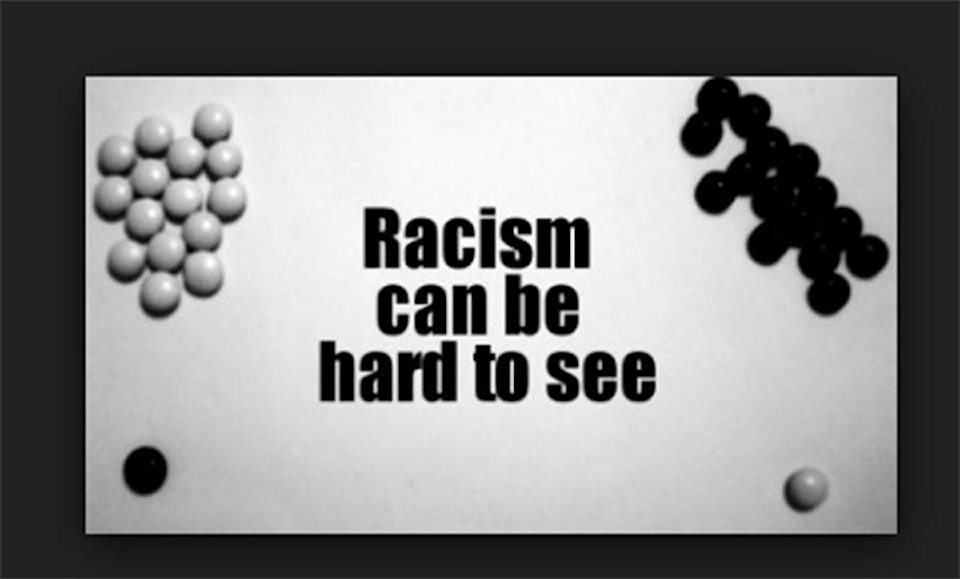Last week the News broke a story of an Indigenous man who felt he was racially profiled in being barred from a local health food store.
That feeling, he said, was based on the fact he was told that he fit the description of people who had recently been caught stealing there.
Social media, obviously, lit up. Among the comments: “he’s playing the race card” and “this couldn’t possibly happen here.”
We like to think we don’t have a problem with racism in Canada. After all, it doesn’t fit our apologetic, easy-going, welcoming nature.
But, for a moment consider this – oppression by its very nature renders silence.
It’s how and why it can be so powerful. People of colour do not have the same sense of safety that translates to an assertiveness in speaking their truth to power.
To the untrained eye, racial profiling is so hard to fathom in a place like Victoria, but it’s only because incidents of this nature are so rarely spoken of.
When you say, “I don’t see colour” it only serves to perpetuate the issues surrounding racism. In 2018, if you’re unable to acknowledge that people around you are of a race different than your own, and what that means, you are likely privileged.
The accessibility of something as integral as food should not be determined by the colour of one’s skin.
If you’re confused, ask a person of colour about their day. Ask them about what they experience as they navigate life through Greater Victoria, where the majority of the population is white. Ask them to tell you about microaggressions.
Racism is easy to spot when it’s a woman in Alberta screaming at a table of brown people in a Denny’s restaurant. We need to get better at calling out the subtleties – the idea that an Indigenous man must be a thief, or couldn’t possibly have the money to shop in a specialty food store, or be related to someone who is white.
Oppression remains ingrained in Canadian society because we’re still not doing a good enough job of tackling racism at its uncomfortable roots.



